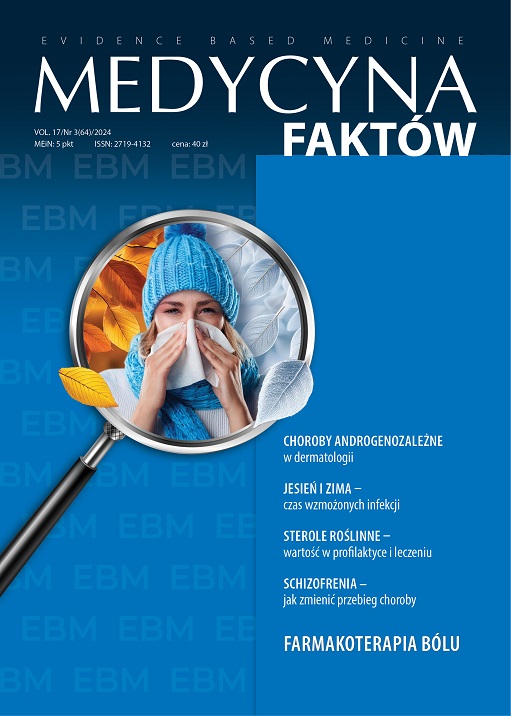Autumn and winter – a time of increased infections Review article
Main Article Content
Abstract
Respiratory tract infections occur throughout the year, but the incidence of infections varies depending on the season and increases significantly in the autumn-winter period. It seems that the main factors in the seasonality and increase in the incidence of respiratory infections in the autumn-winter period are: increased environmental pollution, inhaled air is colder in autumn and winter compared to summer, moist and cool air causing hypothermia, dry air in homes caused by heating and breathing it, excessive heating of apartments, lack of sunlight and lower production of vitamin D, reduced distance between people. The most important thing in dealing with infections in autumn and winter is prevention, and its basic element is strengthening the immune system. However, even the best prevention will not protect us 100%. In the event of a respiratory infection, appropriate treatment should be implemented. In each case of infection (especially of viral etiology), symptomatic treatment should be applied. In several specific situations, where the etiology is known or suspected, we have causative drugs in our arsenal. This applies to influenza infection (oseltamivir), bacterial infection (antibiotic, e.g. amoxicillin with clavulanic acid) and atypical infections (macrolide). Oseltamivir is administered in influenza and when it is suspected. Amoxicillin with clavulanic acid plays a special role in the outpatient treatment of acute otitis media and community-acquired pneumonia. Azithromycin is the first-line drug in atypical infections (pertussis, mycoplasma).
Article Details
Copyright © by Medical Education. All rights reserved.
References
2. Moriyama M, Hugentobler WJ, Iwasaki A. Seasonality of respiratory viral infections. Annu Rev Virol. 2020; 7(1): 83-101.
3. Dowell SF, Ho MS. Seasonality of infectious diseases and severe acute respiratory syndrome-what we don’t know can hurt US. Lancet Infect Dis. 2004; 4(11): 70-8.
4. Lian XY, Xi L, Zhang ZS et al. Impact of air pollutants on influenza-like illness outpatient visits under COVID-19 pandemic in the subcenter of Beijing, China. J Med Virol. 2023; 95(2): e28514.
5. Qing M, Guo Y, Yao Y et al. Effects of apparent temperature on daily outpatient and inpatient visits for cause-specific respiratory diseases in Ganzhou, China: a time series study. Environ Health Prev Med. 2024; 29: 20.
6. Sybilski AJ. Naturalna immunostymulacja. Terapia. 2022; 417(10): 32-5.
7. Sybilski AJ. Oseltamiwir – jedyny skuteczny lek na grypę. Kilka zastosowań, o których może nie pamiętamy. Medycyna Faktów. 2023; 16(3): 302-4.
8. Kozikowska K, Sybilski AJ. Zastosowanie amoksycyliny i amoksycyliny z kwasem klawulanowym w codziennej praktyce pediatrycznej. Świat Med. Farm. 2022; 247(3): 74-9.
9. Sybilski AJ. Azytromycyna – antybiotyk i nie tylko. Pediatr Med Rodz. 2020; 16(3): 261-7.

